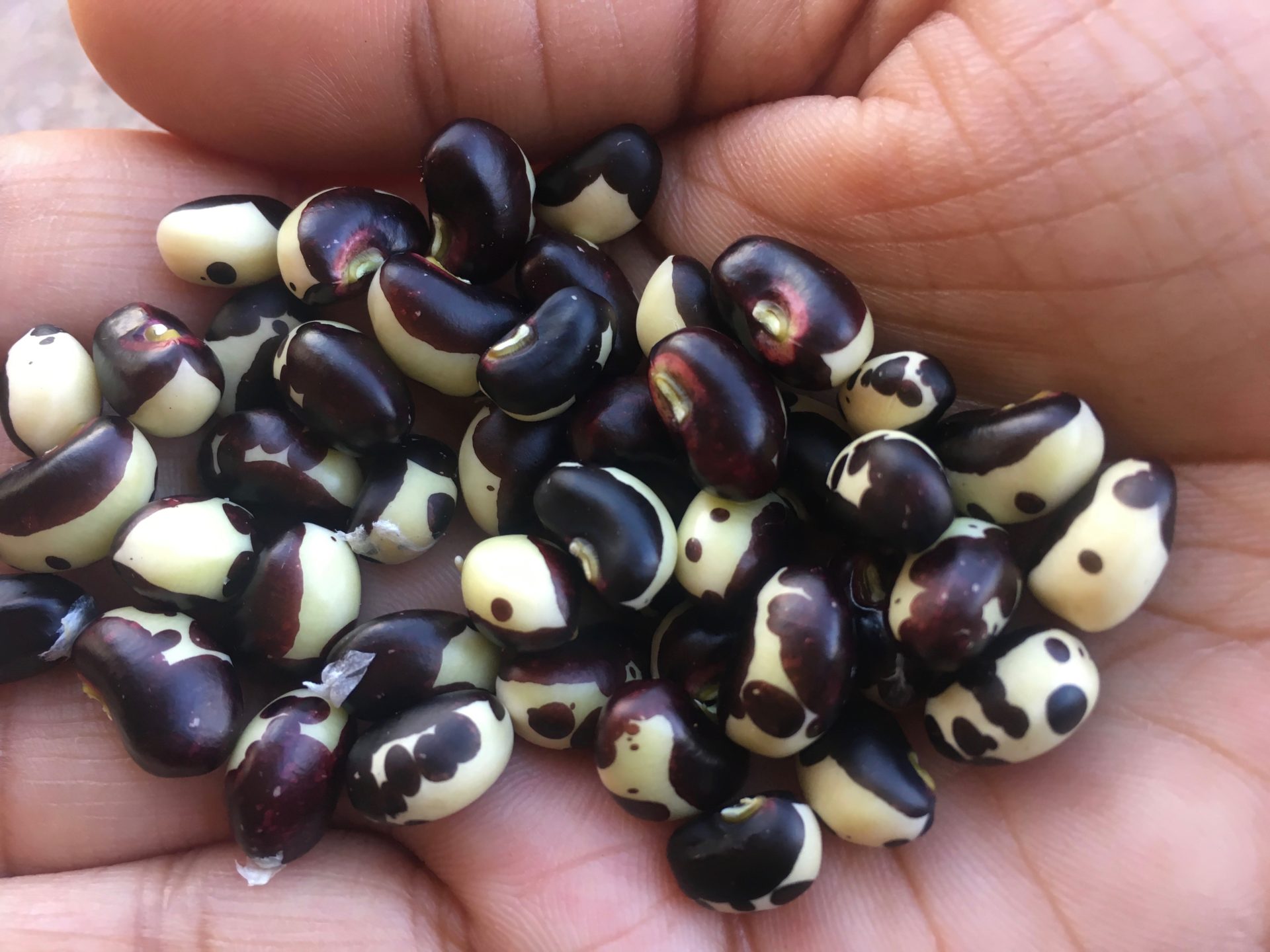LEVEL 1
FULL SUN
Full sun for best fruit production
pH
Neutral
FEEDING
Nitrogen, phosphorus, potassium
PLANTING
Fall through spring, October to April
Fig trees- Ficus caria are one of the easiest trees to grow in our hot climate. After all, it is believed that the common fig originated in ancient Arabia. What we consider to be a fig fruit is really an inverted flower, the “fruit” is the seeds inside. We refer to fig trees as a level 1 tree, perfect for beginner gardeners. However, that’s not to say more experienced gardeners should not grow figs. It produces abundantly and needs little in the way of care. While there are a lot of distinctions that can be made with fig varieties, a quick summary would be that dark figs tend to have a more berry complex flavor, whereas the light figs tend to be more sugar or honey in flavor. Another advantage of growing figs is that backyard growers can easily graft and grow several varieties on to one tree. For those with a small garden area or even limited to a patio garden, this allows a gardener to enjoy several of their favorite varieties off one tree.
VARIETIES
Modest Flavor Varieties:
Brown Turkey. A prolific grower and will get huge. Mediocre taste compared to other varieties.
Black Mission. A prolific grower that will also get large. Slightly better flavor than Brown Turkey.
Black Jack. Great variety that can handle heat.
Preferable Taste Varieties:
Tiger Panache. Beautiful sweet striped fruit.
Violette De Bordeaux. Slower grower compared to other varieties.
Conadra.
Celeste.
Kadota.
Peters Honey.
There are thousands of other fig varieties to try. Some growers get really passionate and collect rare and exotic varieties. In the coming months, we will have a post on the different types of figs and more information of the flavor profiles and varieties.
Root Stock
There is no preferred rootstock for figs. Plants purchased at the nursery will be grafted onto Ficus caria (common fig). Backyard fig enthusiasts will root out cuttings and grow varieties on each tree’s own root stock. Sometimes a slower growing variety such as Violette De Bordeaux will be grafted onto a more vigorous type like Black Mission or Brown Turkey by gardeners.
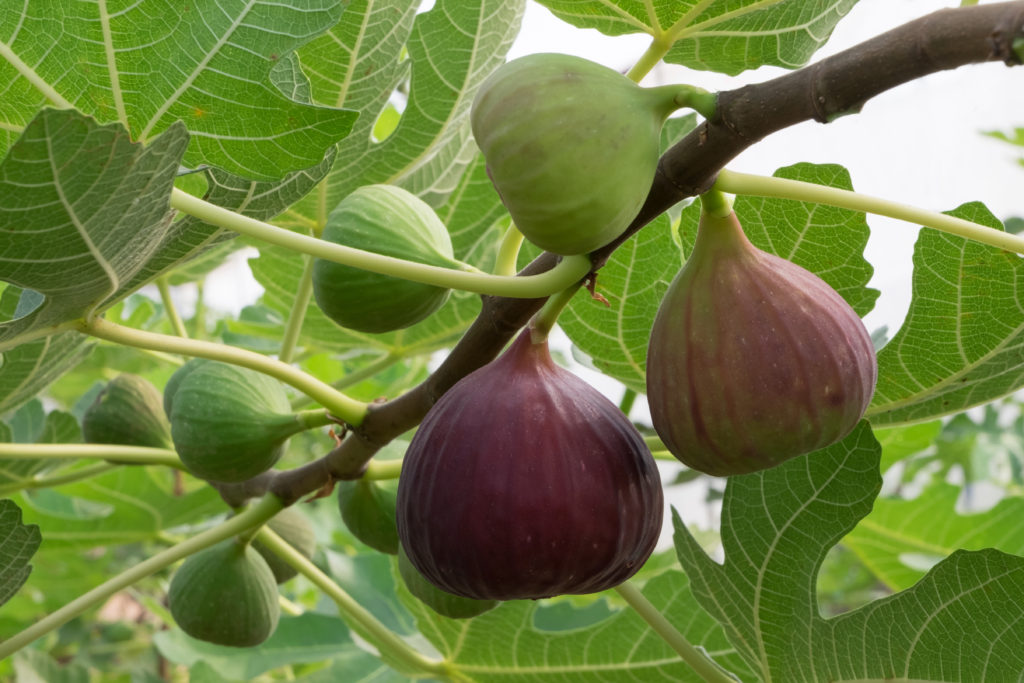
HOW TO PLANT
- It is important to note that figs have very shallow, but wide-spreading roots. Take this into account when deciding where to plant.
- Figs will do well in pots or in-ground, another reason for every gardener to have at least one fig tree. They need neutral soil, but it must be very well draining.
- For container growing, use the largest pot you can, a 15-gallon nursery pot is the very smallest you should use. 30-gallon fabric pots work very well. Figs trees do not mind having their roots contained, therefore they grow very well in pots. However, they need a large pot because they still require a decent amount of soil, and larger pots will keep the roots cooler.
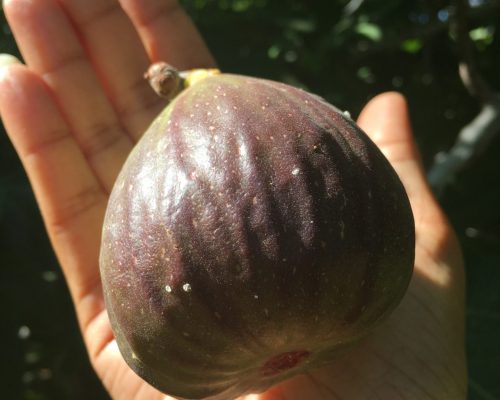
FEEDING AND FERTILIZING
Figs will need balanced feeds. Adding compost 3 times a year is beneficial and all plants benefit from the addition of worm castings. They could also use additional phosphorus for fruit development. Use a seabird guano to supply phosphorus. Liquid seaweed is also a benefit to help with heat stress during the summer months. Add sulphur every 3 months to adjust the pH Do not feed in Fall once the trees begin entering dormancy. Once the trees start to show signs of spring growth, they can be fed again.
Take care of your trees and you can grow figs the size of your hands!
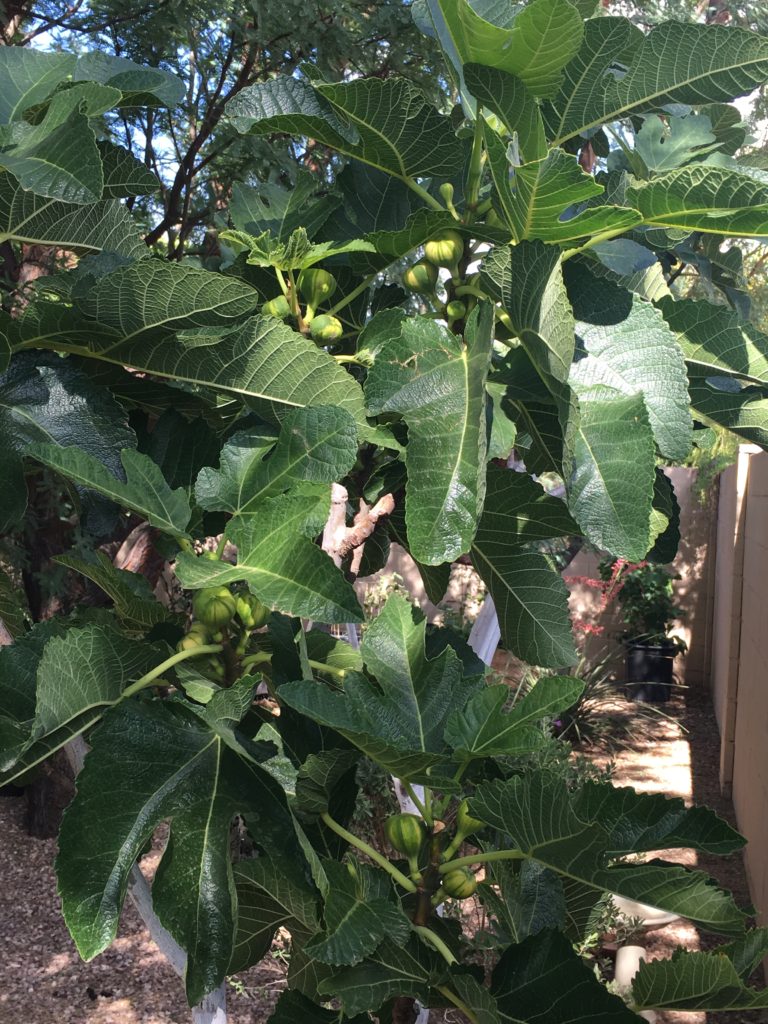
WINTER/SUMMER CARE
Fig trees require little care over the winter here in the low desert. They will go dormant and lose all of their leaves. We do not get cold enough to have to use any kind of winter protection, but watering does change. Fully mature trees should be watered once a month. Younger trees, every two weeks. Please keep in mind, overwatering a fig tree while it is dormant can kill it.
In summer, watering is more critical. Water will affect fig size and production. Water trees to the depth of more than three feet, every three to five days when temps are below ninety degrees. Young trees will need watering every two to three days, use a moisture meter to determine when to water.
When temperatures are above ninety degrees, water more frequently depending on the readings of the moisture meter. In pots, you may need to water every day. Remember, mature trees will require less frequent watering than young trees that still have a shallow root system.
POSSIBLE ISSUES
Fig Mosaic Virus
A common leaf issue – it causes a mottling of the leaves caused by Fig Mosaic Virus. There is no cure for it, but for the most part, it does not cause any issues and is not something to be concerned about.
Wood Boring Insects
Figs wood is soft and can fall prey to wood boring insects. When trimming or pruning any branches off, it is best to seal the cut with some melted bee’s wax.
Fig Eating Beetle
Use organiza bags to protect the fruit and prevent the beetle from getting into the fruit.
Sunburnt Fruit/Watering
While fig trees can take our full desert sun, there is a chance that fruit can get sunburnt. Ensure that the tree is getting sufficient water to help prevent this. Also you may need to protect fruit by shading them if you notice burnt fruit.
Ants
Diatomaceous earth can be used at the base of the tree, but is only effective if dry. Gardeners may also want to try using vaseline around the trunk of the tree to trap ants. Tanglefoot is sometimes used, however tanglefoot can also trap birds and geckos, so is best avoided.
Birds
Birds commonly leave peck marks in ripe or nearly ripe figs. Use fabric tie string bags to protect fruit. Green colored bags are also useful as they trick birds into believe the bag does not contain ripe fruit. Birds are surprisingly crafty and are able to remove bags even when tied on if they are motivated enough.
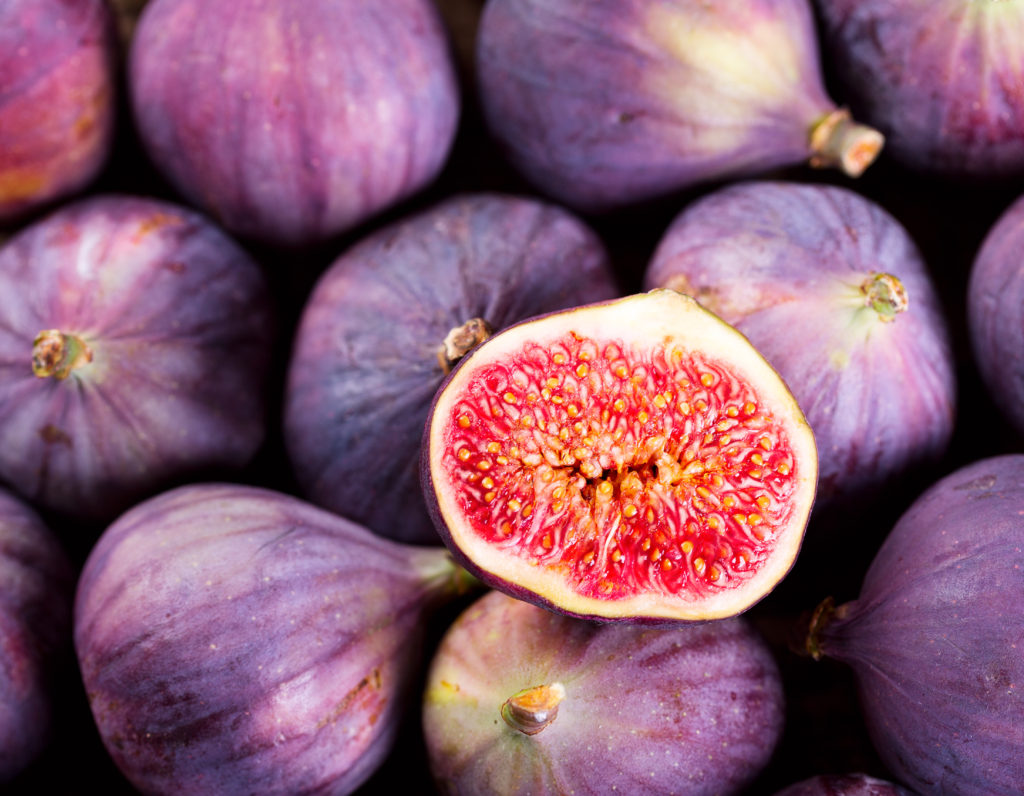
HARVESTING
Freshly harvested figs are a real treat! Ripe figs will feel soft and plump to the touch. Most varieties will come off very easily when ripe. If you have to pull, it is not ready as yet. Some will have a bead of syrup, others will have an open eye (base of the fig). A few varieties will display a slight droop of the stem. It is best to do a little research and find out the best time to pick the varieties you would like to grow. You can also track days to maturity for your specific variety.

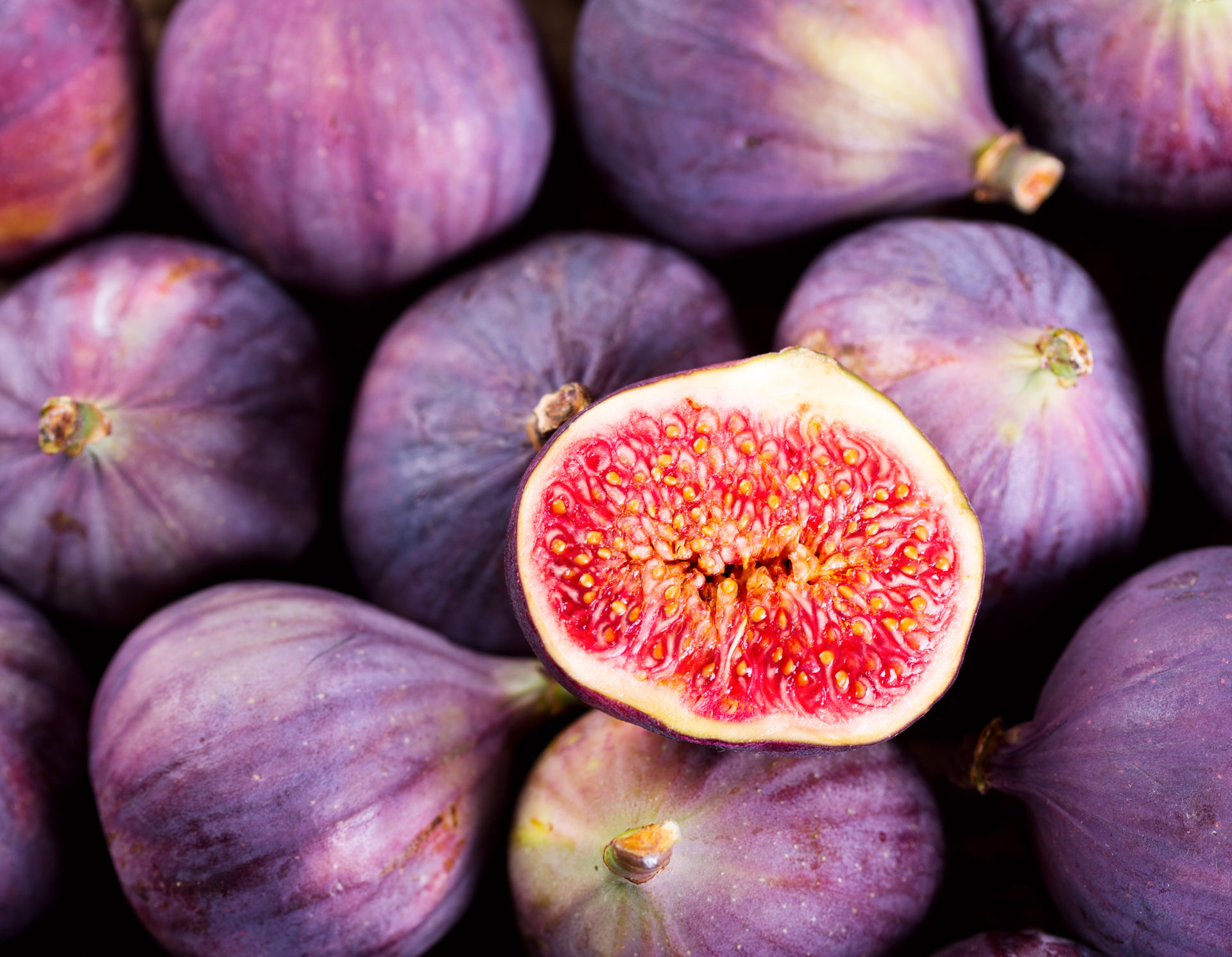
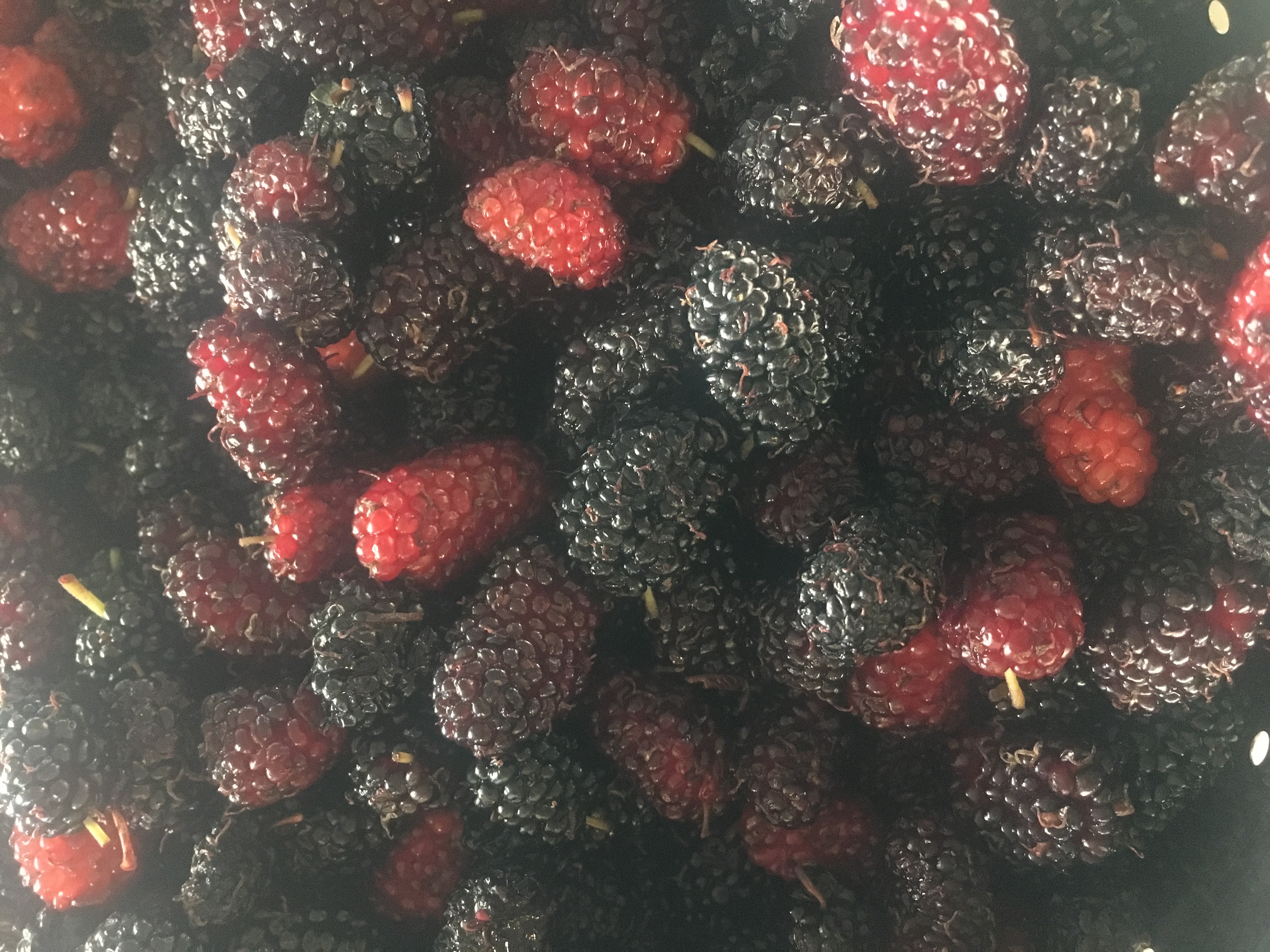
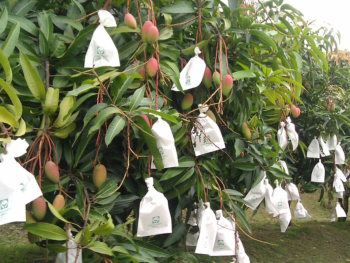
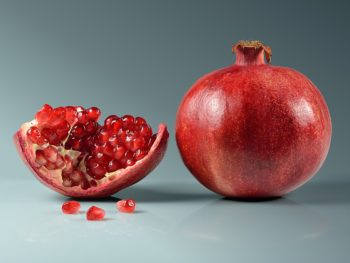
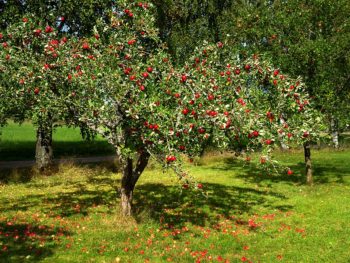
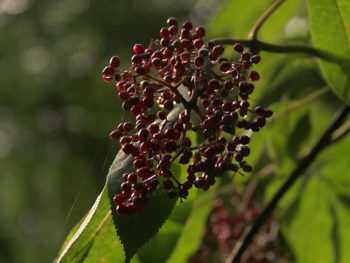
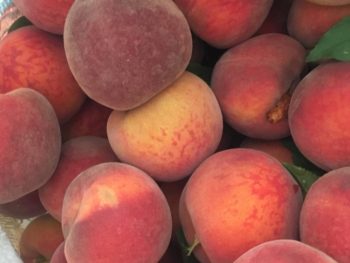
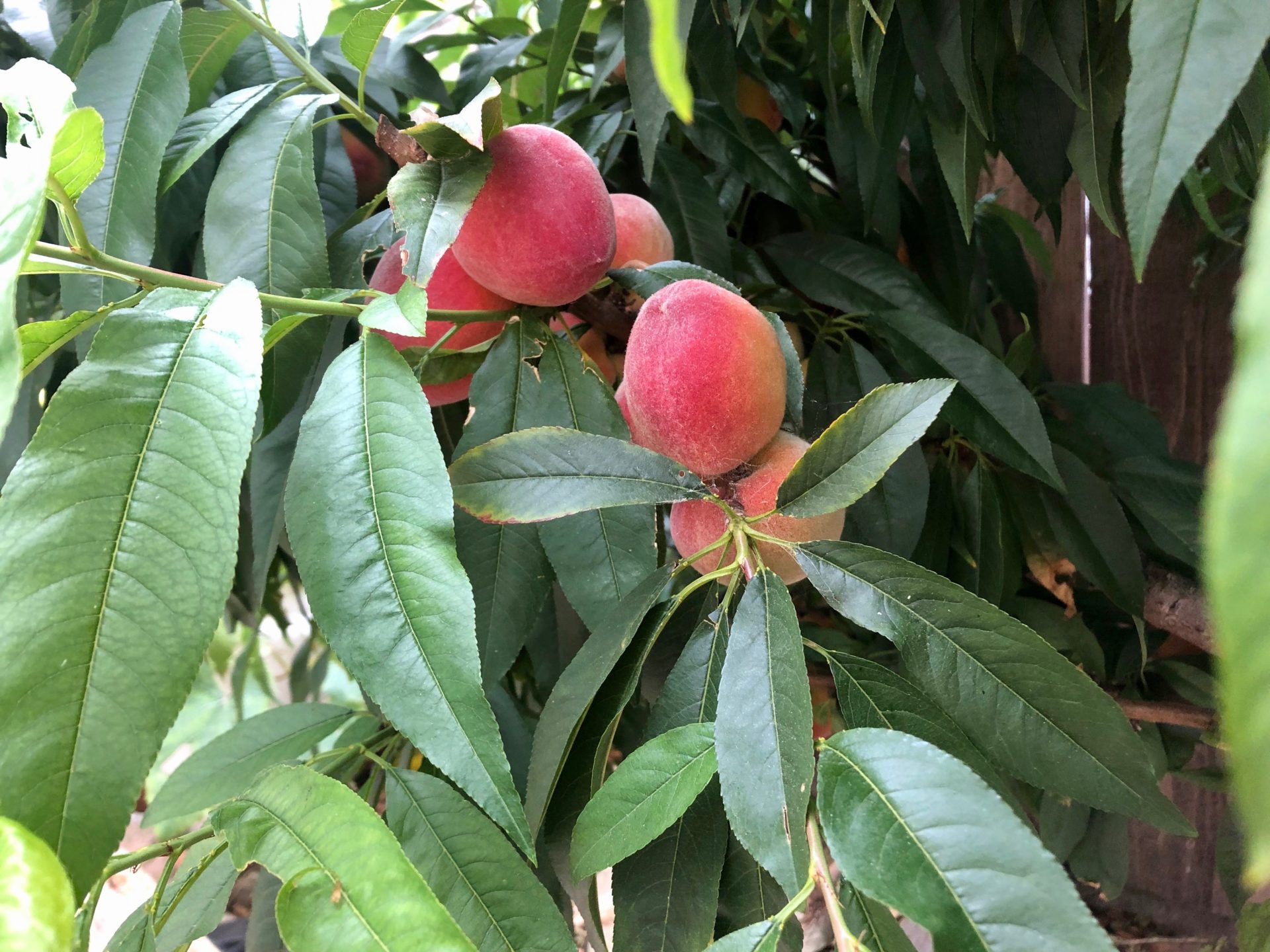 Cooling Down with Peach Leaves
Cooling Down with Peach Leaves